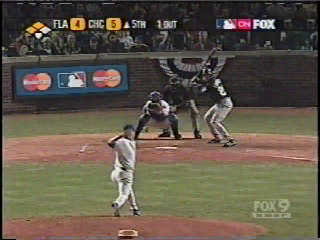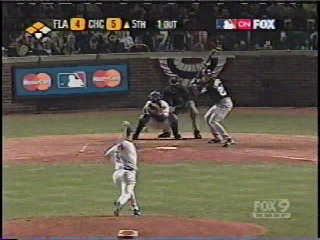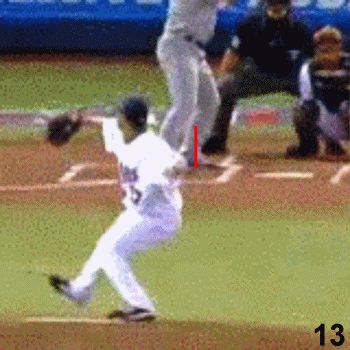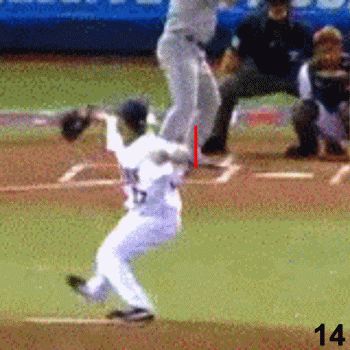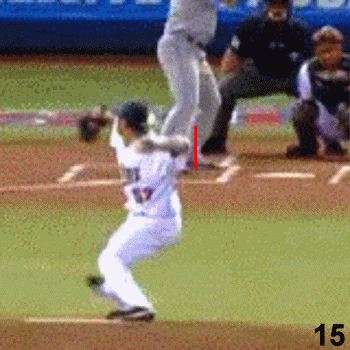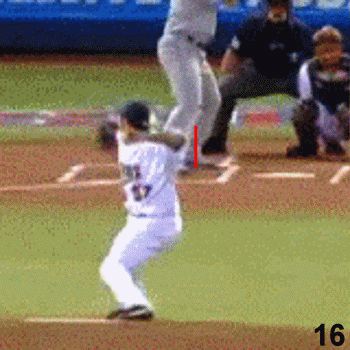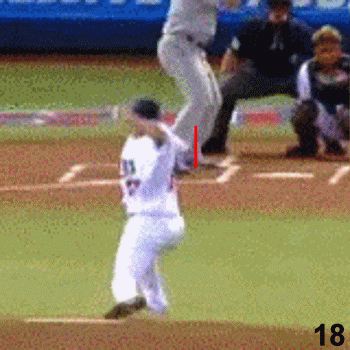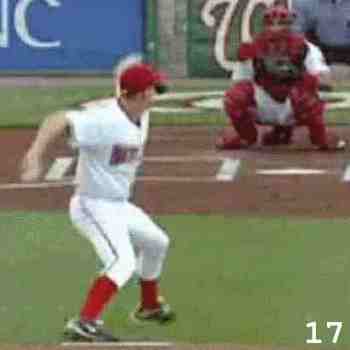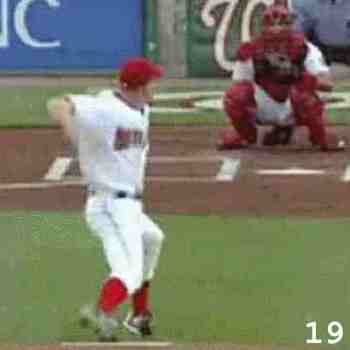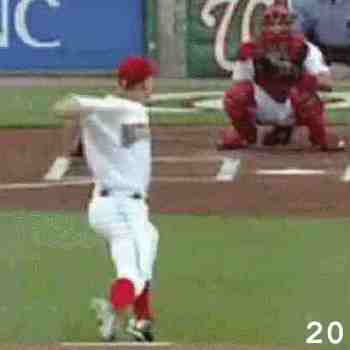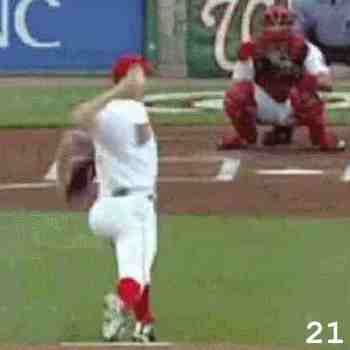|
The concept of
Timing in baseball pitchers, as I define it, refers to...
- The position of the
pitching arm
- When the shoulders start to turn
- AND the pitching arm starts to come under load
This is a different
definition of Timing than everyone else uses.
Notice that
I don't mention the feet, much less (Stride) Foot Contact.
That's why people have so far failed to duplicate my findings.
A Theory of Timing
in Baseball Pitchers
1. Baseball pitchers are throwing harder.
2. Baseball pitchers are having an increasingly difficult time staying
healthy.
3. Item ONE and Item TWO are related.
3.A. Baseball pitchers are having trouble staying healthy BECAUSE
they are throwing harder.
4. Baseball pitchers are throwing harder, but having trouble
staying healthy, because they are being
taught and trained using a set of tricks and shortcuts that work by
creating Timing problems.
5. By "Timing" in baseball pitchers, I am referring to...
5.A. The position of the pitching arm.
5.B. At the moment the pitching arm begins to rotate and come under load.
5.C. "When the pitching arm starts to come under load" is the key
thing to look for, and I've focused on measuring it directly, rather
than via proxy.
5.D. I should note, that I use a different method for
judging timing in baseball pitchers, having found that the
standard method and milestone — (Stride)
Foot Contact — for judging baseball pitchers is no longer reliable.
6. The problem with mechanical patterns like the
Inverted W and the
Tommy John Twist
is, as I've said since 2007, regarding Mark Prior, that they CAN —
and I mean CAN and not always DO — create Timing problems in pitchers. But, very often,
they DO create Timing problems.
7. I first started to understand what poor Timing looks like by looking at Kerry Wood's pitching mechanics
in general and the picture below, in particular...

Kerry Wood - 2006
Notice how Kerry Wood's front foot is down, or nearly so, but his
pitching arm is FLAT and not UP?
That's bad.
I discuss this in
greater detail in my original piece from May 2006...
In general, what I saw is what I have since come to call
Flat
Arm Syndrome.
Notice how Kerry Wood's pitching arm starts coming around towards
the target while his pitching arm is FLAT and not UP.
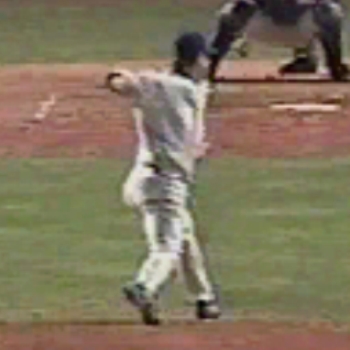
Frame 36
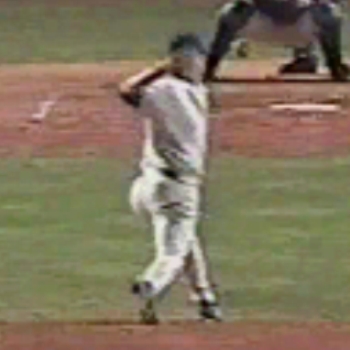
Frame 37
8. In order to test my theory, I started making predictions about
the fates of certain pitchers.
That then led to my
analysis of Johan Santana's
pitching mechanics and arm action...
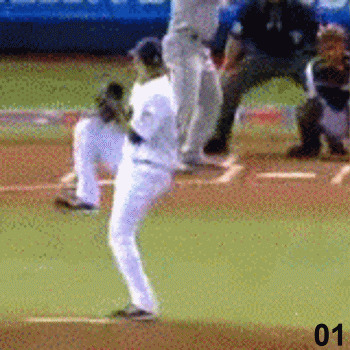
Johan Santana - Twins
...and led to one of my most accurate predictions.
There is no question that Johan Santana has
been very successful to date. However, due to his borderline
mechanics I question whether Johan Santana will be able to
continue that level of success. I think Johan
Santana could easily give the Mets the same heartache that
Pedro Martinez and El Duque have.
8.A. What I saw in Johan Santana's pitching mechanics was that
his pitching arm was FLAT and not UP when his pitching arm started to...
8.A.i. Come around (to the plate).
8.A.ii. Come under load.
8.B. This is a pattern that, for obvious reasons, I call Flat Arm Syndrome.
9. I saw the same thing in
Stephen Strasburg's pitching mechanics; that his
Inverted W
kept his pitching arm from getting UP on time.
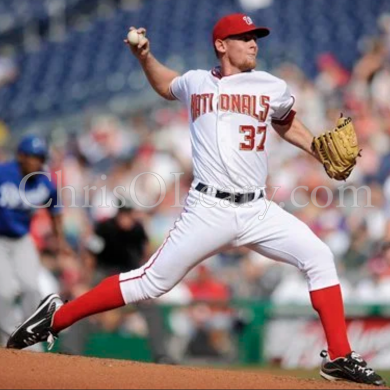
Stephen Strasburg
Instead, it was FLAT as his pitching arm started to
come around and come under load.
10. The relationship between mechanics and injuries is getting
harder for people in the velocity business to deny. Their answer is
to promise that their extreme conditioning methods will compensate
for the mechanical flaws. However, there's no evidence that this is
the case.
|



